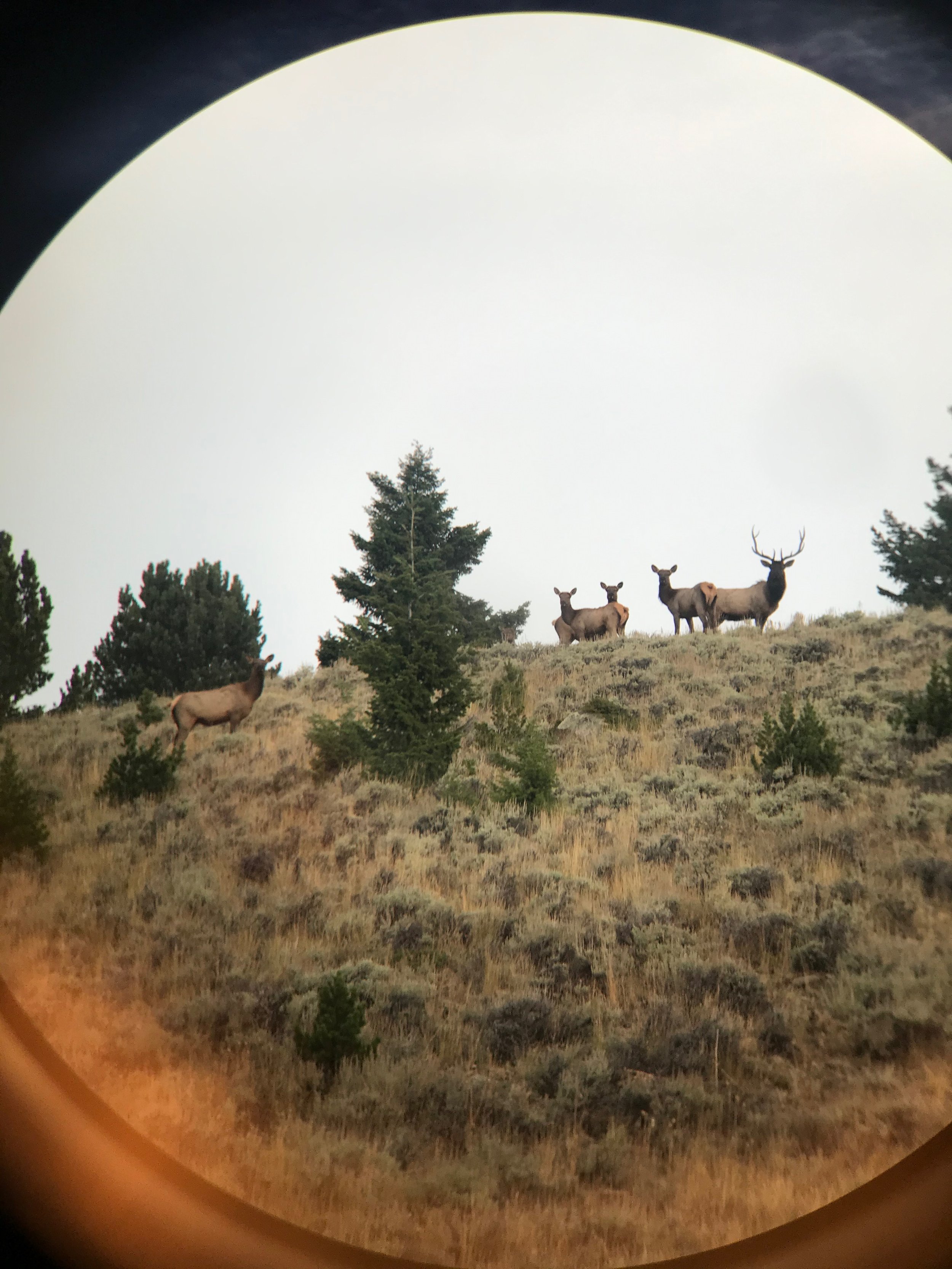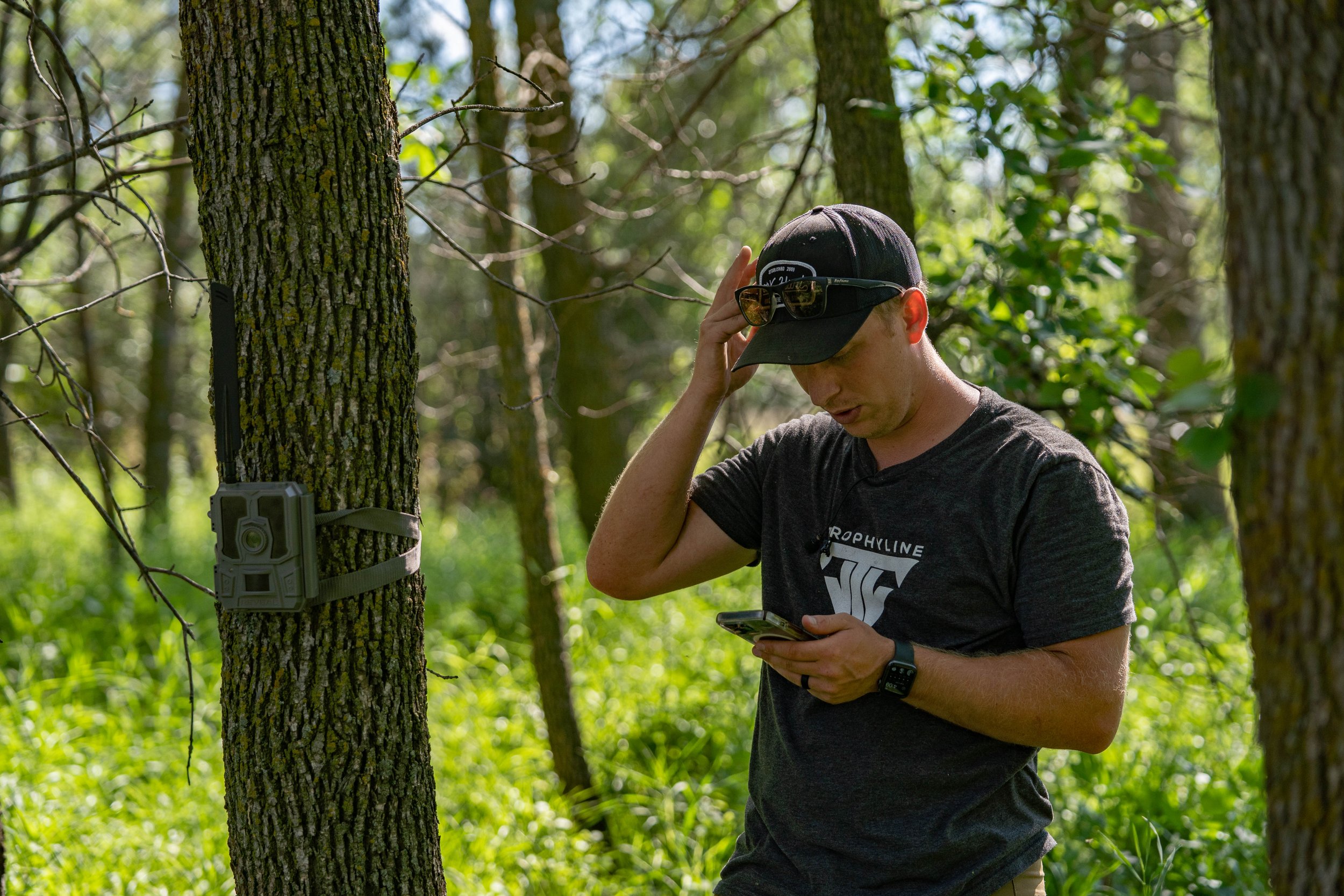By Alex Comstock
My first full whitetail season filming my hunts is officially in the books. There is a steep learning curve when it comes to filming your hunts, and put simply, it's not as easy as it looks. I came into the 2016 season fully aware that it was going to be a challenge to film my hunts. I knew what my goals were, and I set forth with those goals in mind (will go in depth later).
There was a combination of me and my hunting partner Tyler taking turns filming each other, and me self-filming. The first month of the season was mostly me and Tyler switching off between hunter and cameraman, and from about Oct. 1st through the rest of the year, I mainly self-filmed all of my hunts. I learned so much about filming, things I need to change, how to be better, etc. I could go on and on. If you are someone who is thinking about hitting the woods next year with a camera, take what I've learned and apply it to your situation. If you are somebody who already has a camera in tow, I'm guessing you went through a lot of what I went through at some point. With all of that said, here is what I learned during my first season of filming.
1. Know Your Goals: Before anything else, you need to be able to clearly answer to yourself what your goals are when it comes to filming. Why have you decided to bring a camera to the whitetail woods? Are you trying to tell a story? Are you doing it for your own personal pleasure, or are you producing a show/YouTube video? If you can't clearly answer this, you'll struggle the first time you are presented with a shot opportunity, but can't get the camera on the deer. It's bound to happen, and you need to be able to react quickly. For me personally, I went into the season knowing that I wanted to tell a story from the perspective of the lens. What that meant to me was to video as much as I could, but I wouldn't let the camera hinder my ability to harvest a deer. What did that result in? Four shot opportunities, yet I only got one kill shot on camera. And guess what, I'm totally okay with that.
2. Added Gear: This one seems obvious, but you might not realize how much more gear you are hauling in, especially if you are self-filming. It's not as simple as tossing a camera in your pack and going. If you are hunting out of a treestand, you've got a camera arm base, camera arm, your camera, and for me, I then additionally was taking a GoPro, and sometimes even my DSLR camera on top of that. The gear adds up quickly, and your pack will significantly go up in weight. Coming up with a system to pack that in is critical. What I found worked best for me was to clip my camera arm and base to the outside of my pack, leaving more room on the interior, and that way I didn't have to actually carry anything in.
Strapping your camera arm and base to the outside of your pack will make the haul into the stand much more tolerable.
3. It takes A Lot Longer to Set up/Tear Down: With the added gear you are taking into the stand, it adds time to your setup, and then also when you pack up at the end of a hunt. More than once I found myself rushing to set up as quickly as I could, not being fully used to the amount of time it would take me to set up. Make sure you put this into account and plan for it taking an additional five, ten, maybe even fifteen minutes to set up, and then to pack up at the end of a hunt as well.
4. Camera Placement: This is much easier when you've got a cameraman. The best way to do this is to place the cameraman stand a bit higher than the shooters stand, and face it 90 degrees to the left or right, giving the cameraman the ability to film over your shoulder. Where it becomes much more tricky is when you are self-filming. In a best case scenario, you are able to place the camera on your weak side. For example, if you are a right handed shooter, by having the camera to your right, you are able to maneuver the camera with your right hand, and hold your bow with your left hand, until needing to take the shot. Personally, I found it easiest to have the camera waist high when I was standing, giving me the ability to control the camera easily, but not having it get in the way during a shot.
5. Film Everything: When I started to go back and put together videos from this past season, I wish I had more to work with. When you are trying to tell a story through video, all the little things make a huge difference. Don't only be worried about filming deer. All of the other stuff such as checking trail cameras, the scenery around you while on stand, etc. plays a big role in helping tell the story.
6. Multiple Cameras: If you are able to afford it, having a second or third camera in addition to your main camera can significantly aid your ability to story tell. Action cameras such as a GoPro are great in these situations. You can take the action camera and mount it up above you, giving a "second angle" to your video. These second angles can be powerful, and can help give a better representation of what you are doing while on stand, filming, or taking a shot.
This second angle captured by a GoPro gives a different look while I film an approaching buck.
7. Think Outside of the Box: This is something that I want to do a much better job of next year. Think of ways you can be unique, or bring a different angle to your video. Experiment attaching a GoPro to your bow, and have it film while you are hauling your bow up to the stand or something along those lines. I think besides a standard second angle as I mentioned above, you can get really creative with the action cameras. To give another example, something I would like to try next year is to stick a GoPro in the ground behind where I expect to have deer walk, and film the deer from ground perspective. Being unique is a great way to having more quality video to work with.
8. Organization: Early in the year, I wasn't very organized at all. I constantly kept forgetting things such as extra camera batteries, my camera arm, heck one time I even left home without my camera. The best way I found to combat this issue was to have one duffel bag committed to just containing my camera gear. Every time I left home, that bag came with me, and when I arrived to my hunting destination, I knew that I didn't forget anything at home.
9. Keep That Camera Rolling: Time and time again, I would catch a glimpse of a deer, turn my camera on, and then I'd lose the deer. I'd scan with my binos, and if I didn't see it, I'd turn the camera off. Many times the camera is picking up things you don't notice, and if you leave it recording longer than you think you need to, you might pick up more than you could see with the naked eye.
10. Have Fun With It: If you are going to start filming your hunts, make sure you have fun with it! It can be easy to let it stress you out if things don't go your way. I learned that above all else, if your not having fun while filming, it probably isn't worth the time and effort.
Conclusion: Filming your hunts is a big commitment. I learned an immense amount of information this year. After one season under my belt, I'm still a novice. I can only imagine how much better my filming skills will be five years from now. It takes practice and patience to become really skilled at it, but that doesn't mean you can't start learning now. I've found telling a story though the perspective of a camera lens to be addicting, yet challenging at the same time. If you are thinking about starting to take a camera with you in the woods, my advice would be to start now. The best teacher is going to be experience, and that you can never replicate.

































